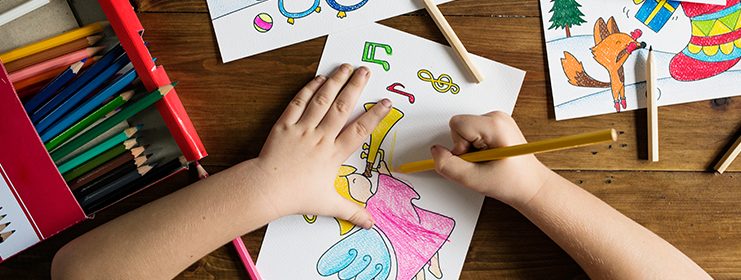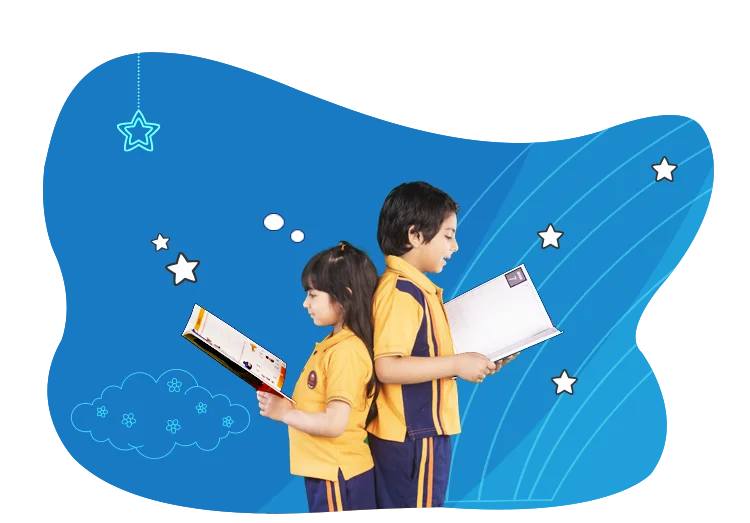Activities that can Boost the Thinking Capabilities of Children

We can use thinking routines to teach students to make their ideas visible and accessible. It can be done by using a variety of graphics that help structure ideation and reasoning. They are very simple to use yet very impactful. Parents support the development of thinking routines at home because one of the benefits for parents in using visible thinking routines is that they can see learning through the eyes of children.
Let us discuss some of the good thinking routines that you can use at your home along with the classrooms of your kid. Here, we are mentioning some activities that you can organize for your child at home often.
See Think Wonder
It is very simple, when students see something, they start to think about that and wonder about the process related to it. The curiosity in children can be ignited by using a simple object, picture, video, or artwork. This works as a great introductory thinking routine. After showing something related to the subject or lesson to the children, you can ask them to write down and share their observations with you. They will then decide what they think about their observations of what is happening or being represented? You have to encourage the child to support their thinking with reasons and also prompt them to wonder what else might be happening or have happened within or outside the shown stuff.
Peel the Fruit
In Peel the Fruit thinking routine, children are encouraged to ‘peel’ back the layers of the issue. They then move on to the substance of the deeper issue until finally, you ask them to evaluate the issue at the core. A variety of statements, images, and questions can be shared with the students throughout a lesson. They can be consistently asked to return to the ‘Peel the Fruit’ image to assist them with showing their learning and understanding any complex issue. Once they are done with the complete task, you can ask them to graph their answer to the original question and reflect on any changes to their original opinion. Such activities are arranged for the brainstorming of kids.
Question Organizer
Question Organizer thinking routine is a visual information organizer with spaces for questions such as when, why, who, where, and how. For example, you can teach the students Celebrations and Commemorations from History subject that focuses on cultural celebrations and commemorations around the world. You can divide children into small groups and each group member chooses a different celebration or commemoration to research.
Three-Two-One Bridge Organizer
The three-two-one bridge organizer thinking routine is used to record initial thoughts, ideas, questions, and understandings about a given concept. Once you have taught the concept or shown a video to the children, you can ask them to rethink their initial opinions after learning more about the topic. The objective is to build bridges between ideas when new information is obtained. You have to make children focus on the idea of understanding and connecting their thinking and ideas.
Kids Schools adopt such teaching methods and make children better at their thinking.
Six Thinking Hats
In six thinking hats, students are expected to look at things from different points of view. It helps them develop decision-making and creativity in the thinking skills of students. They can put on a hat to see things from a different point of view. It can be different colored hats to make it more engaging. Parents need to tell kids that they need to think in different ways with each hat on.
Think Pair Share
In a think pair share thinking routine, students are suggested to think about a question and discuss their answer with a partner. This is a very simple routine that can be practiced daily in a classroom or even at home with some kids. It can be utilized whenever there are posing questions that might require deep thinking. Teachers use this activity to boost the confidence and thinking of children in a group.
Venn Diagram
We all are aware of Venn diagrams. These are used to compare two or more things and to depict both their similarities and differences. A Venn diagram is usually made up of two or more circles or figures that overlap. In the outer circles, the differences are recorded and within the overlapping section, the similarities are recorded. By using this routine, you can ask the students to compare and contrast ideas for a greater understanding.



